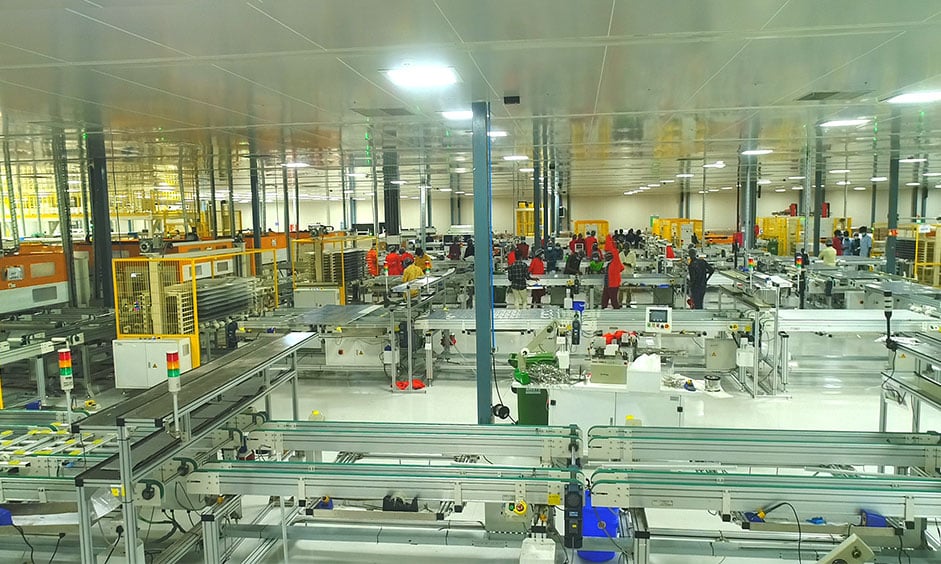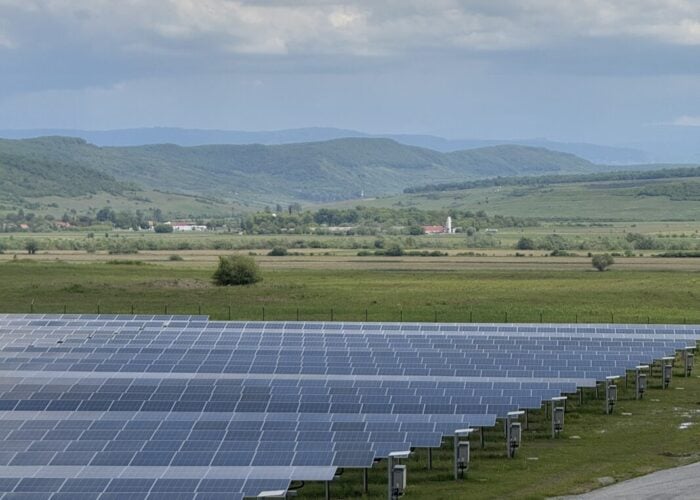
Indian module manufacturer Vikram Solar has launched its latest product, the Suryava module, which is the company’s first product to use heterojunction (HJT) cells.
The bifacial modules include 20 busbars, and have a maximum power conversion efficiency of 23.34%, and a maximum wattage of 725W. These features put the module on par with the company’s most efficient products in the Hypersol range of modules, tunnel oxide passivated contact (TOPCon) panels with a maximum power conversion efficiency of 23.02%.
Try Premium for just $1
- Full premium access for the first month at only $1
- Converts to an annual rate after 30 days unless cancelled
- Cancel anytime during the trial period
Premium Benefits
- Expert industry analysis and interviews
- Digital access to PV Tech Power journal
- Exclusive event discounts
Or get the full Premium subscription right away
Or continue reading this article for free
The remainder of the company’s portfolio—the Paradea, Prexos and Somera ranges of modules—are all monocrystalline products, with a peak power conversion efficiency of 21.5%, so the launch of an HJT product is a significant development for Vikram Solar.
“Suryava’s performance metrics, developed in our National Accreditation Board for Testing and Calibration Laboratories (NABL)-accredited research and development (R&D) lab—including lower degradation, enhanced weather resistance and superior efficiency is expected to position it as an industry leader,” said Gyanesh Chaudhary, chairman and managing director of Vikram Solar.
“We are confident that Suryava will be a game-changer and will contribute in achieving India’s and the world’s solar energy goals.”
The launch of the modules is a positive development for Vikram Solar, which already boasts around 3.5GW of annual manufacturing capacity. The company is also present on the Approved List of Module Manufacturers (ALMM), a list of module manufacturers whose products are permitted to be used in projects sponsored or subsidised by the national government.
The ALMM was first implemented in 2019, before being suspended, and reintroduced in April of this year, as the government is keen to encourage Indian developers to buy modules from companies based in India, many of whom are present on the ALMM. As of July this year, companies on the ALMM had a total manufacturing capacity of 50GW, and every watt of this capacity will likely be needed as India looks to dramatically expand its solar sector; in the first quarter of this year, India’s solar installations increased 400% year-on-year.
The news follows Vikram Solar’s signing of a 393.9MW module supply deal with NLC India in June this year, as the company looks to expand its footprint in India. The company has also sought to expand its presence worldwide, aiming to build two 4GW manufacturing facilities in the US. Chaudhary told PV Tech Premium earlier this year that “there will be no shortage of polysilicon and even wafers in the US market”.






